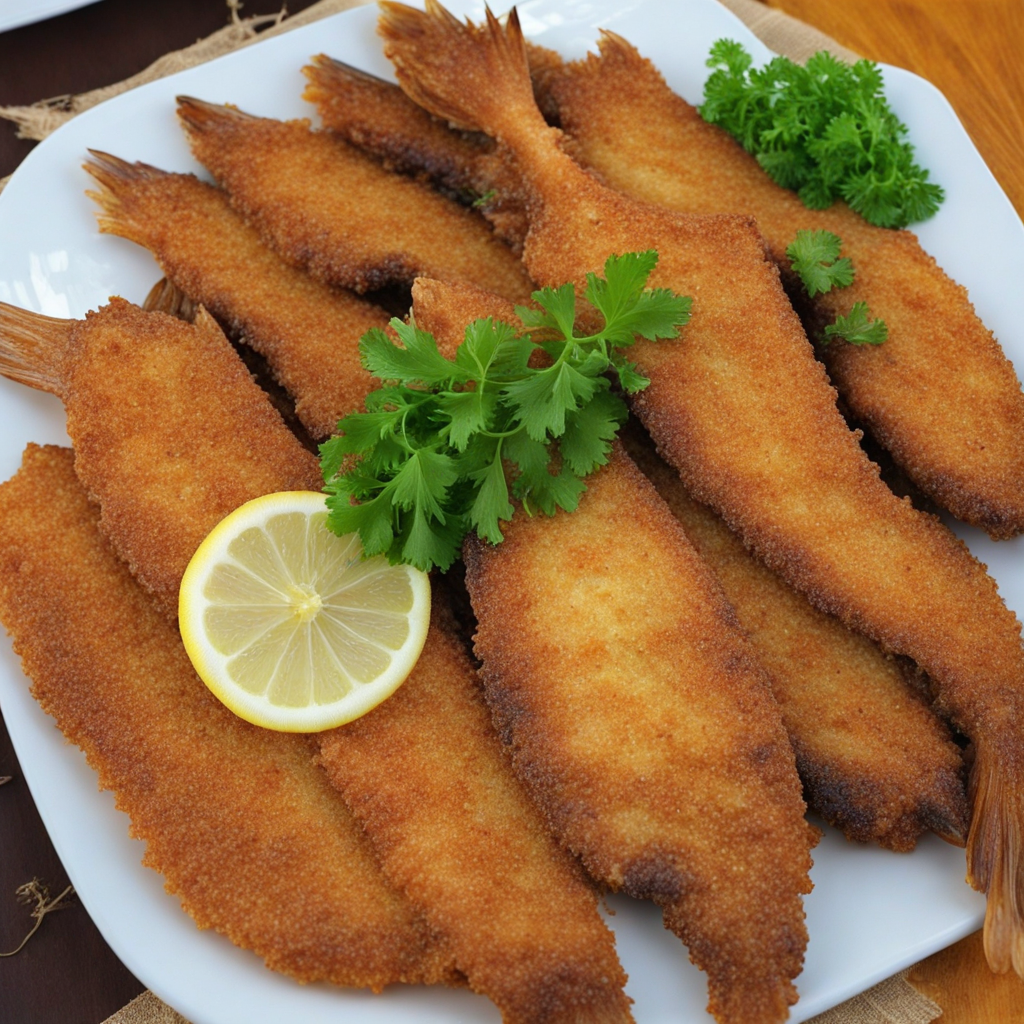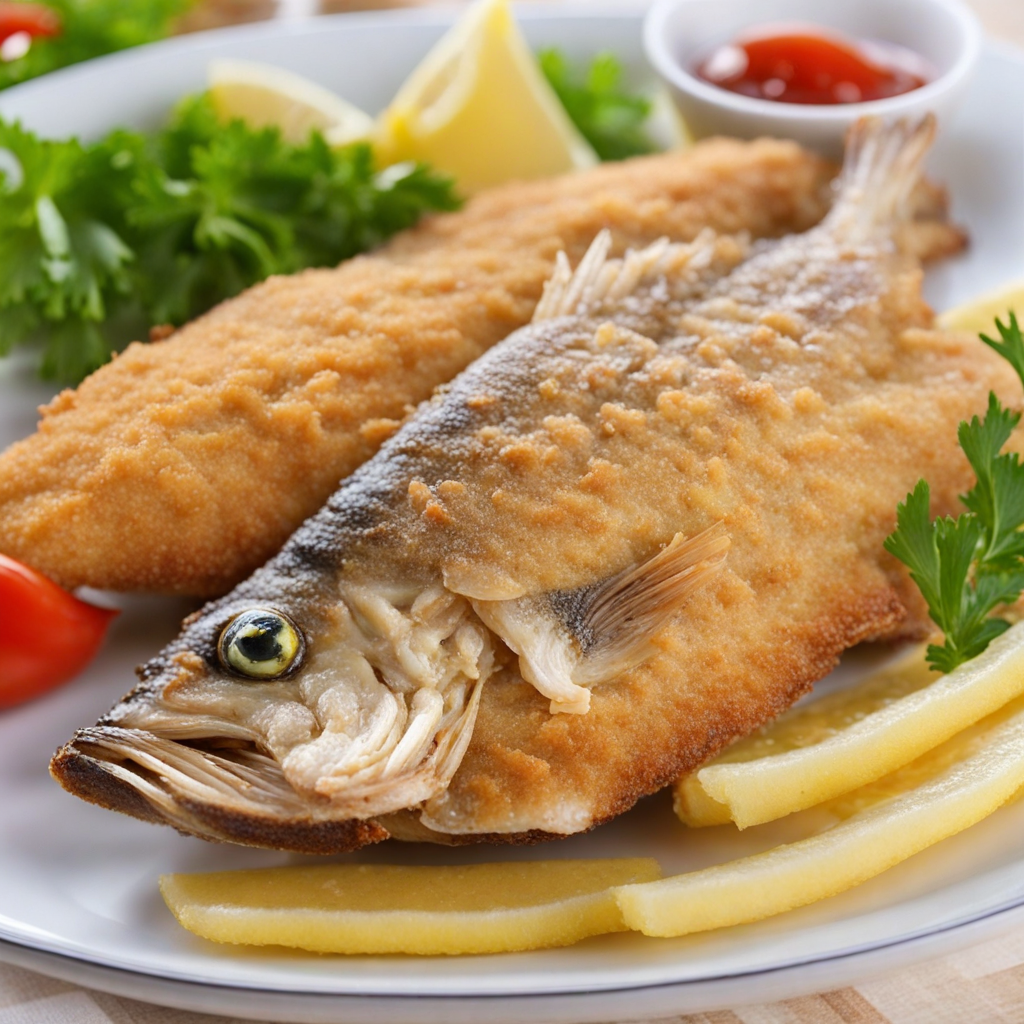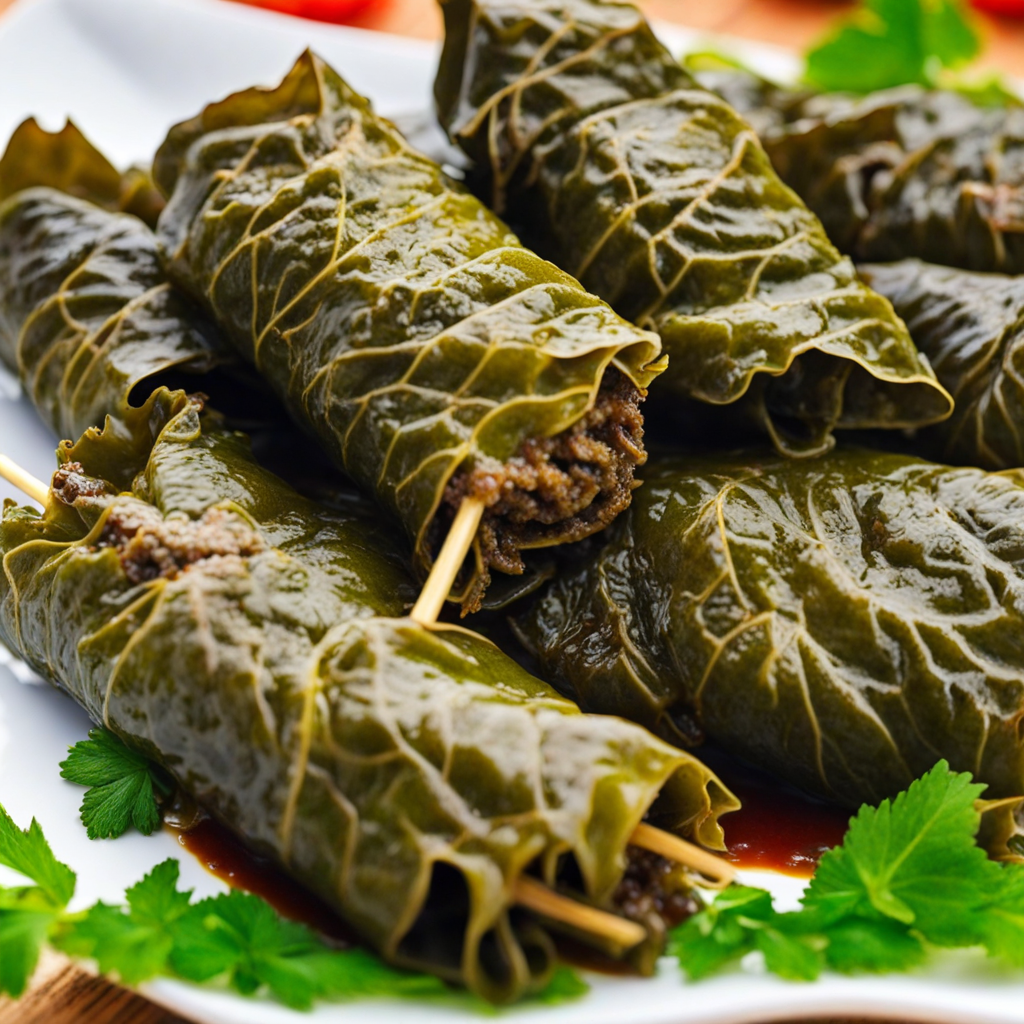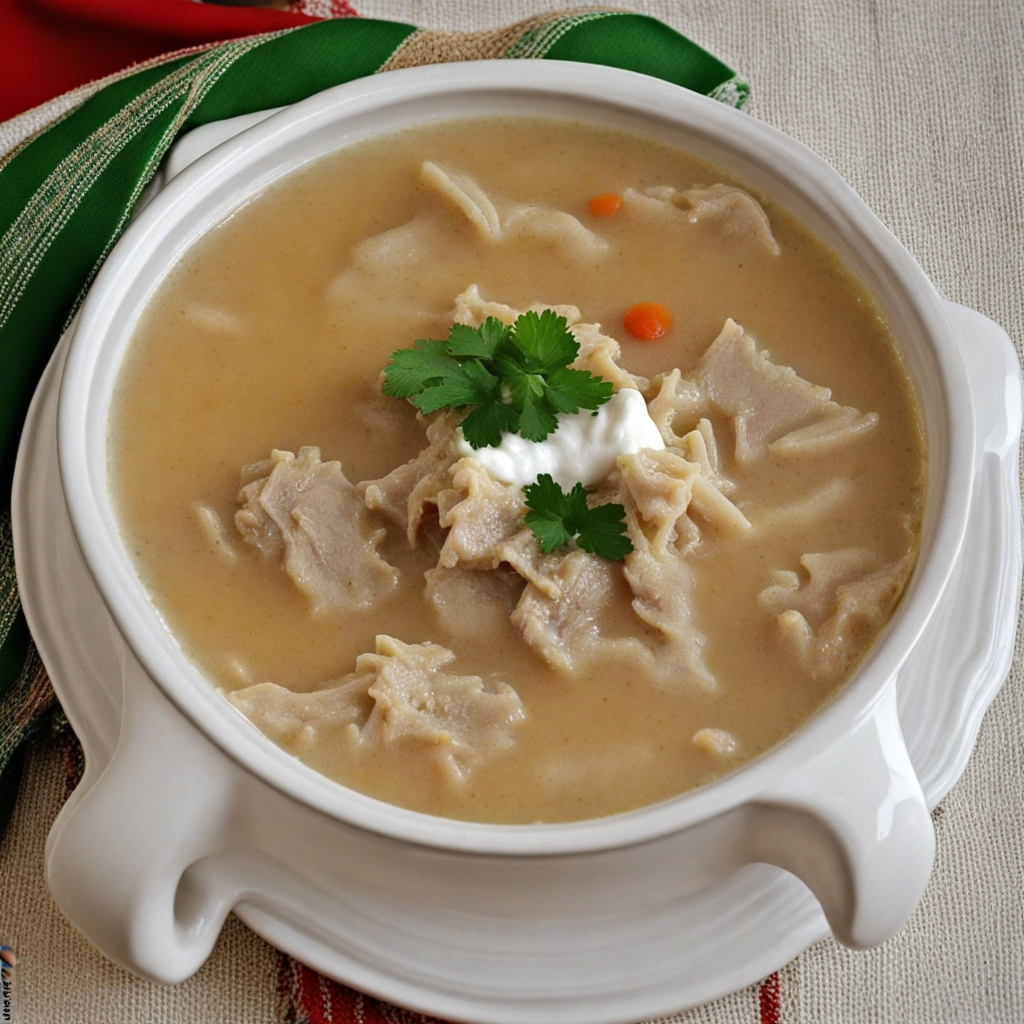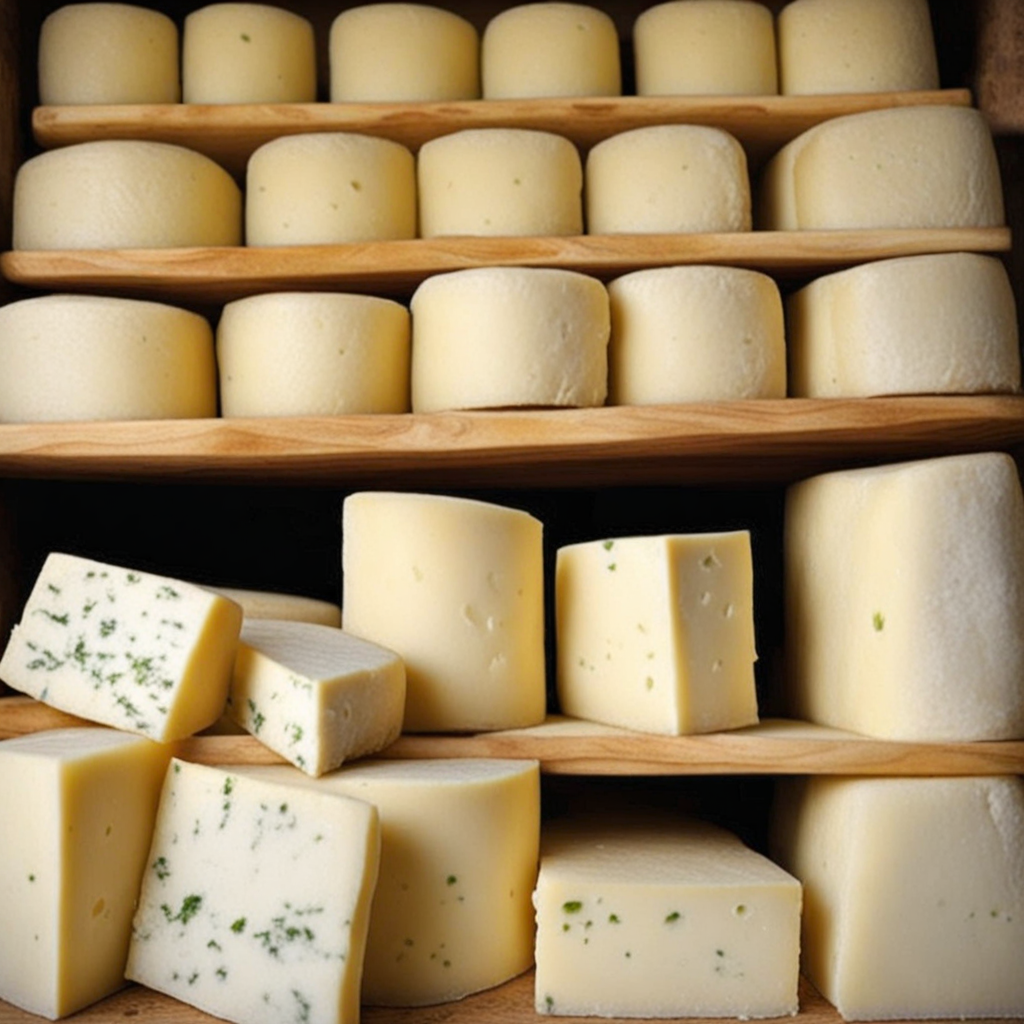Fried Fish
Fried fish, a beloved dish in Romania, showcases the country’s rich culinary traditions and its connection to the Danube River and Black Sea. Typically made with fresh fish like carp or perch, the fish is coated in a light dusting of flour or breadcrumbs before being fried to golden perfection. This cooking method enhances the natural flavors of the fish while providing a satisfying crunch on the outside, contrasting beautifully with the tender, flaky flesh inside. The dish is often seasoned simply with salt and pepper, allowing the quality of the fish to shine through, but it can also be accompanied by a squeeze of fresh lemon for a zesty kick. Served hot and straight from the pan, fried fish in Romania is frequently accompanied by a side of polenta, known as mămăligă, which adds a comforting element to the meal. This creamy cornmeal dish not only complements the fish but also serves as a vehicle for the rich flavors. Additionally, a dollop of tartar sauce or a garlic sauce can elevate the experience, providing a creamy contrast to the crispy exterior of the fish. Many Romanians also enjoy their fried fish with a side of pickled vegetables, which introduce a tangy freshness that cuts through the richness of the dish, creating a well-rounded dining experience. In Romanian culture, fried fish is often enjoyed during family gatherings and festive occasions, highlighting its status as a staple comfort food. Whether served as a main dish or as part of a larger feast, it brings people together around the table, sharing stories and laughter. The aroma of fried fish wafting through the air evokes a sense of nostalgia and warmth, making it not just a meal, but a cherished tradition that embodies the heart of Romanian hospitality and culinary heritage.
How It Became This Dish
Pește Prăjit: A Culinary Journey through Romanian History #### Origins of Pește Prăjit Pește prăjit, or fried fish, is a beloved dish in Romania, particularly popular in coastal regions and along the banks of the Danube River. The origins of this dish can be traced back to the country's rich and diverse culinary landscape, influenced by its geography, climate, and cultural exchanges that have occurred throughout history. Romania's extensive waterways, including the Black Sea and numerous rivers, provided an abundant source of freshwater and saltwater fish. As a result, fishing became an essential activity, both for sustenance and trade. The practice of frying fish dates back to ancient times, with early Romanian communities employing simple techniques to prepare their catch. The use of frying as a cooking method likely came from the broader Mediterranean practices, where fish was often cooked in olive oil or animal fat. The traditional preparation of pește prăjit usually involves cleaning and gutting the fish, which is then seasoned, coated in flour, and fried until golden brown. The dish is often enjoyed with polenta (mămăligă) or a side of tartar sauce, creating a delightful balance of flavors. Over time, various regions of Romania developed their own unique twists on the dish, incorporating local spices and accompaniments, which contributed to the diversity of pește prăjit across the country. #### Cultural Significance Pește prăjit holds cultural significance not just as a dish, but as a part of Romanian identity. It is often associated with family gatherings, festivals, and communal meals, particularly during the summer months when fishing is at its peak. The dish serves as a bridge connecting generations, with recipes passed down through families, each adding their own personal touch. In Romanian folklore, fish is symbolically linked to abundance and fertility. Many traditional celebrations include fish dishes, especially during the Christmas season, when the preparation of fish is a common practice in anticipation of the holiday feast. Fried fish is often featured on the table, representing not only sustenance but also a connection to cultural heritage and traditions. Additionally, pește prăjit is a staple in various regions, particularly in Dobrogea, where the proximity to the Black Sea has influenced local cuisine. Here, fishermen have long relied on the sea's bounty, and their knowledge of fish preparation techniques has helped shape the culinary landscape. The dish is also prominent in urban areas, where it can be found in markets and restaurants, reflecting the urbanization of Romanian society and the continued appreciation for traditional food. #### Development Over Time The evolution of pește prăjit can be seen through the various historical periods that have shaped Romania's culinary practices. The Ottoman Empire's influence in the 15th century brought new spices and cooking techniques, which were gradually integrated into Romanian cuisine. Fish dishes became more elaborate, with the introduction of marinades, herbs, and additional side dishes. In the 19th century, as Romania moved towards modernization, the culinary scene began to incorporate influences from Western Europe. The rise of restaurants and cafes in urban areas led to the commercialization of pește prăjit, with chefs experimenting with different cooking methods, such as deep-frying and grilling. The availability of new cooking tools and equipment allowed for greater creativity in preparing the dish, leading to variations that included not just traditional fish but also innovative pairings with contemporary garnishes. The socialist era in the mid-20th century saw a shift in food availability and preparation. While access to fresh fish was limited during certain periods, pește prăjit remained a staple in many households, often prepared simply to ensure affordability and accessibility. The dish became emblematic of the resilience and resourcefulness of Romanian families, who would adapt their recipes based on available ingredients. With the fall of communism in 1989, Romania experienced a culinary renaissance. The reopening of borders facilitated the influx of global cuisines, and Romanians began to embrace international influences while still cherishing traditional dishes like pește prăjit. This period saw a revival of interest in local ingredients and artisanal food production. Fish markets flourished, and chefs focused on sourcing fresh, sustainable fish, often from local fishermen, reinforcing the connection between food and community. #### Modern Interpretations Today, pește prăjit continues to thrive in Romania, both in traditional forms and modern interpretations. While classic recipes remain popular, contemporary chefs experiment with flavors and techniques, offering innovative spins on the dish. Some may serve the fish with exotic spices or serve it alongside international sides, reflecting the globalization of culinary practices. Health consciousness has also influenced how pește prăjit is prepared. Many chefs now opt for lighter frying techniques, such as air frying or using healthier oils, to create a dish that aligns with modern dietary preferences. The emphasis on sustainability has led to a rise in promoting local fish species, encouraging diners to appreciate the ecological balance while enjoying their meals. Pește prăjit is not just a dish; it is a culinary testament to Romania's rich history and cultural evolution. It encapsulates the stories of the people who have prepared and enjoyed it for generations, reflecting both regional diversity and national unity. As Romania continues to navigate the complexities of modernity while honoring its culinary heritage, pește prăjit remains a delicious reminder of the past, a cherished part of family gatherings, and a bridge connecting the old with the new. In conclusion, pește prăjit is more than merely fried fish; it represents a journey through the heart of Romania's culinary tradition. From its humble beginnings rooted in the country’s natural resources to its esteemed place in modern gastronomy, pește prăjit continues to be a dish that brings people together, celebrating both the flavors of Romania and the enduring spirit of its culture.
You may like
Discover local flavors from Romania


